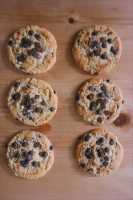
03 Mar “Snack Culture” Means Kids Get More Calories During Sports Than They Burn
MedicalResearch.com Interview with:
Lori Spruance PhD
Assistant Professor, Public Health
College of Life Sciences
Brigham Young University
MedicalResearch.com: What is the background for this study?
Response: I was interested in studying this phenomenon after I attended a research conference presentation where the presenter was describing results from a study where they found that children between ages 6-11 who were physically active drank more sugar-sweetened beverages than children in that age group who were not physically active. The presenter suggested that they believed this was due to youth sports and Gatorade consumption.
I was really intrigued by the fact that kids were getting physical activity, but had really high sugar-sweetened beverage intake. Prior to the study, I did some qualitative interviews with parents of children involved in youth sports. During these interviews, parents discussed the “snack culture” and the shame they sometimes feel being the “healthy parent”. I really wanted to investigate further what was happening.
MedicalResearch.com: What are the main findings?
Response: In the study, we observed both physical activity and snack/beverage offerings at all points during the game. We found that kids were consuming more calories than they expended, but most surprisingly (and important in my opinion) was the amount of sugar kids were offered in this one setting. Kids were offered more than 26 grams of sugar within an hour, which is more than the daily recommendation for children this age—and this was not taking into account the other types of food and beverages kids were eating throughout the day.
MedicalResearch.com: What should readers take away from your report?
Response: The main thing I would like people to take away from this study is that we need to be aware of the types of snacks and beverages we are providing to kids in a setting that has the benefit to really establish some healthy habits. We have already tested a small-scale intervention to see if we can change parent behavior and have seen some positive results.
I’m happy to distribute the flier we create and suggest the parks and recreation and other youth sports administrators use the findings from this study to improve their food environment.
I have no relationships to disclose.
Citation:
Natalie Bennion, Lori Andersen Spruance, Jay E. Maddock. Do Youth Consume More Calories than they Expended in Youth Sports Leagues? An Observational Study of Physical Activity, Snacks, and Beverages. American Journal of Health Behavior, 2020; 44 (2): 180 DOI: 10.5993/AJHB.44.2.6
JOIN OUR EMAIL LIST
[mailpoet_form id="5"]We respect your privacy and will never share your details.
Last Modified: [last-modified]
The information on MedicalResearch.com is provided for educational purposes only, and is in no way intended to diagnose, cure, or treat any medical or other condition. Always seek the advice of your physician or other qualified health and ask your doctor any questions you may have regarding a medical condition. In addition to all other limitations and disclaimers in this agreement, service provider and its third party providers disclaim any liability or loss in connection with the content provided on this website.
Last Updated on March 3, 2020 by Marie Benz MD FAAD

